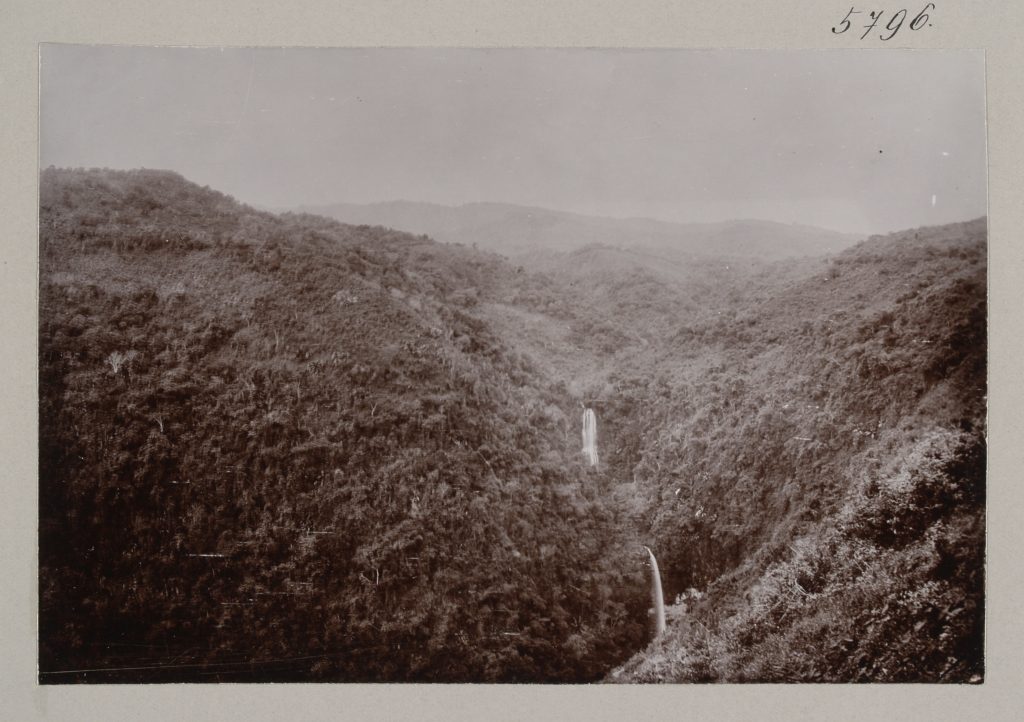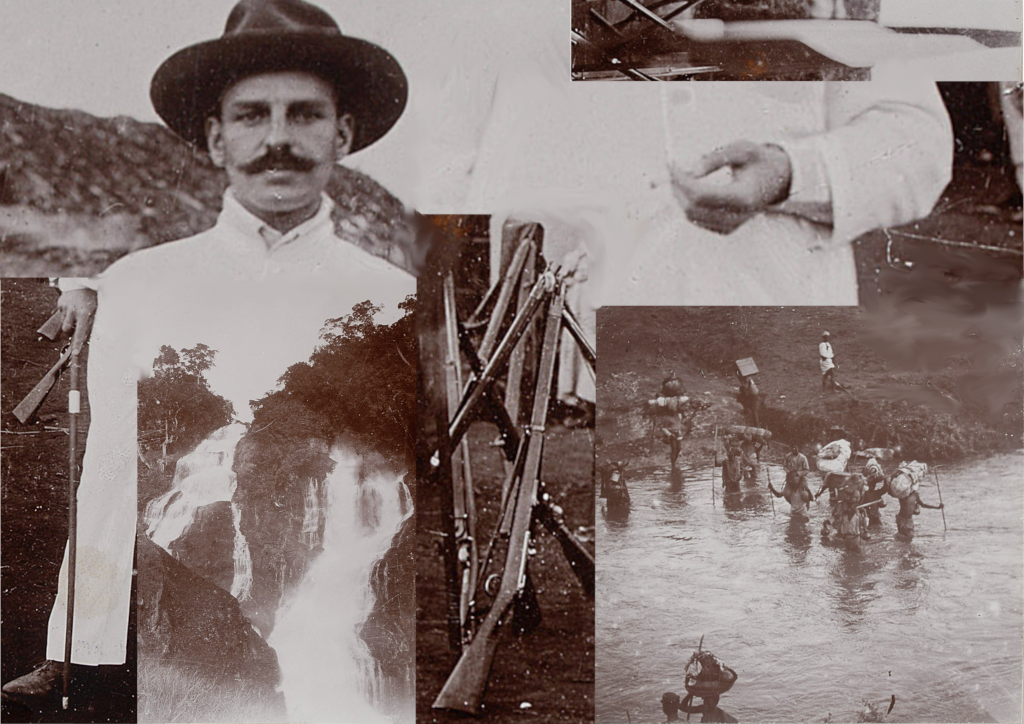For my master thesis I am working on two albums of colonial photographs from the collection of Weltmuseum Wien. The photographs were taken by Max Schoeller, a German entrepreneur and hobby anthropologist. Between 1896 and 1897 he traveled East Africa and collected several thousands of ethnographic objects and took photographs of people, infrastructure, animals, and landscapes. In my master research project, I will conduct ethnographic fieldwork and examine the photographs collaboratively with members of a Massai community in Monduli district in Tanzania. Photographs have the capacity to trigger memories and knowledge, which makes them powerful tools for social research (Collier and Collier 1986, Edwards 2003). Being part of archival collections, photographs are not accessible for so-called “source communities“, as the local knowledge connected to them is not recognized by museums and researchers. In the face of the entanglement of museums and colonialism, scientific research connected to archival material requires a great ethical sensibility. Photographs may be culturally connected in different ways and their significances and meanings may differ radically from those imposed on them by archivists and curators in the museum. Filling this gap is an important motivation for my research.

The knowledge connected to photographs is always ‘partial’ and ’situated’ (Haraway 1988), it is bound to the referents’ perspective (Barthes 2000 [1980]): This perspective depends on the way photographs present themselves to us, the context ascribed to them, time and place of the encounter and their material form (Edwards 2001; 2003). Last summer semester, I had the chance to engage with the Schoeller photographs from a different angle, meaning in the context of a visual anthropology seminar, which followed a creative approach. I got to reflect on my own positionality and to bring my knowledge into conversation with the material form of the photographs. Fortunately, at the beginning of the semester I met a person who coincidentally turned out to work with photographs, and we got into a conversation about the essence of photographs, their affective capacities, and their distinction from linguistic representations of the world. As a leisure activity, she developed old punk images with the cyanotype technique, which is one of the oldest techniques for the production of photographs and was used in natural science to produce images of plants. I was intrigued by this form of artistic engagement with existing photographs and delighted as she offered to develop some of the Schoeller photographs with the cyanotype technique together.
To engage with the content of the photographs, I furthermore decided to create collages. My interest at the beginning of this working process was predominantly intellectual and informed by theoretical approaches, historical information, and political debates. It can be best described with Roland Barthes term ‘studium’ which he develops in his famous text Camera Lucida (Barthes 2000 [1980]: 26-28). Barthes uses the terms ‘punctum’ and ‘studium’ to describe two interrelated dimensions of his engagement with photographs. While the ‘studium’ resembles the intellectual knowledge which activates as we observe a photograph, the ‘punctum’ describes the affective tension which resolves from the existence of content and detail within photographs which cannot be described in terms of the ‘studium’ – aspects that exist beside and contrary to all generalizable knowledge. ‘Punctum’ points to the uncertainties and relational affective reality of the engagement with photographs. To my own surprise, the process of reassembling the photographs led to a shift of my relationship with the photographs from a mainly analytical examination to a more affective engagement.
Practically, I used a photo editing program to cut the photographs which I perceived as most significant into smaller bits and pieces and arrange them in new images. This work turned out to be highly intuitive. I experienced how some pieces almost naturally fit together and others did not. On the one hand my own sense of aesthetics played a significant role in my creative decisions, on the other hand the narratives I created were deeply influenced by my own theoretical engagement with and historical knowledge of Max Schoeller and his photographs. The creative approach enabled me to access the photographs in an intimate way, engaging different spheres of knowledge: conscious and embodied. The collages appeared as the materialization of these different forms of knowledge and the affective dimensions in play within the creative process, helping me to reflect more consciously on their meanings and significances in relation to my own personal perspective.
In a final work step, we were developing the images with the cyanotype technique. It was really important to me to develop the images on fabric rather than on paper in order to be able to experiment with the materiality of the photographs. During the process it became clear that the development on fabric is more complicated and unpredictable than the one on paper. The first cyanotypes turned out blurry and pale, so we had to dye them in black tea, which increased the contrast, but also radically changed the color and atmosphere of the images from an intense and positive blue to a rather gloomy sepia tone.

Even though some of the images were not as clear as I had hoped, and it was difficult to recognize the content, the results were quite effective. While the structure of the fabric blurred the details of some of the images, it simultaneously invited the observer to physically engage with the photographs. As soon as the cyanotypes where finished, we automatically grabbed them and ran our fingers over the surfaces. I experience this reaction whenever I show the cyanotypes to someone: People intuitively grab them and engage with them on multiple sensual levels – a reaction that is even intensified by the blurriness of the cyanotypes. This conduct differs quite radically from the usual handling of photographs, especially those which are part of archival collections and can never be touched without gloves. The material form affects the reading and engagement with photographs and other objects. It furthermore changes the content and context of photographs. The experimental approach brings the personal perspective in the reading of photographs to the fore and holds the potential to challenge dominant readings and narratives. The ostensible truth of the photographic content and the demand for authenticity dissolves and leaves space for a multi-sensorial and highly personal involvement.
By taking this approach to the field and using creative forms of engagement like the collages with people from the Massai community in Tanzania, I hope to prompt and bring to the fore alternative forms of knowledge. Analyzing which aspects of the images are combined and associated with each other, holds the potential to disclose knowledge which can not be verbalized. It might furthermore serve as a form of positive appropriation of the photographs. It might turn the colonial gaze on its head by transforming the initial meanings of the photographs from a Massai perspective. Moreover, this approach might open up new perspectives on the meanings of historic photographs and help to find ethical ways of dealing with colonial archives by engaging community perspectives and knowledge from various angles.
References:
Barthes, Roland ([1980] 2000): Camera Lucida. Reflections on Photography. Translated by Richard Howard. London: Vintage Classics.
Collier, John and Malcolm Collier (1986): Visual Anthropology: Photography as a Research Method. Rev ed. Albuquerque: University of New Mexico Press.
Edwards Elizabeth (2003): Introduction, in: Peers, L., & Brown, A. K.: Museums and Source Communities: a Routledge Reader. London: Routledge, pp. 83-99.
Edwards, Elizabeth (2001): Raw Histories. Photographs, Anthropology and Museums. Oxford [u.a.]: Routledge.
Haraway, Donna (1988): “Situated Knowledges: The Science Question in Feminism and the Privilege of Partial Perspective”, in: Feminist Studies, 14(3), pp. 575–599.
Kopytoff, Igor (1986): The Cultural Biography of Things. Commoditization as Process, in: Appadurai, Arjun: The Social Life of Things. Commodities in Cultural Perspective. Cambridge [u.a.]: Cambridge Univ. Press, pp. 64-91.




